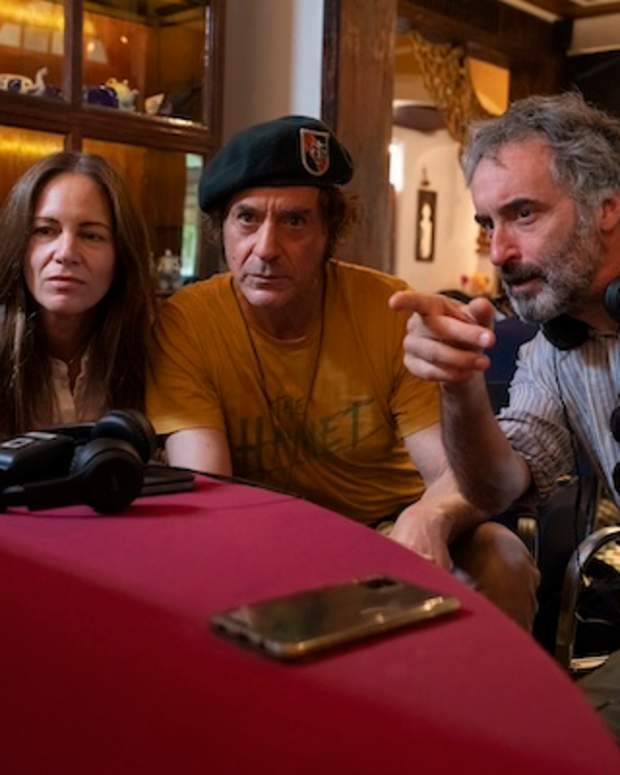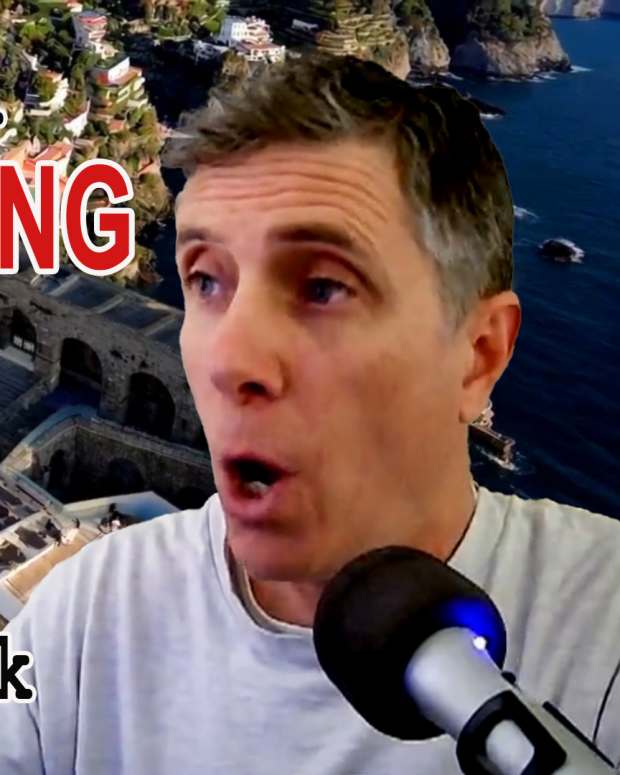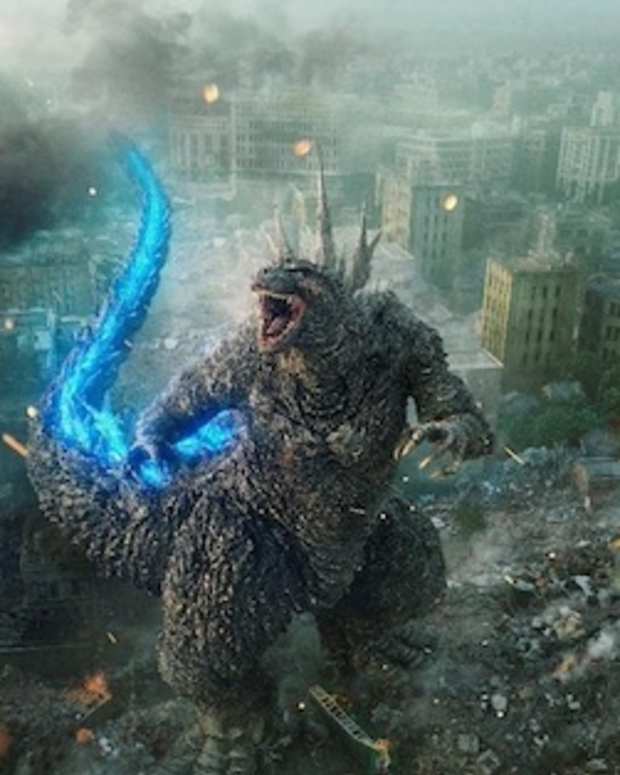FROM SCRIPT TO SCREEN: Mark L. Smith, Screenwriter of 'The Revenant'
Career journalist Andrew Bloomenthal has covered everything from high finance to the film trade. He is the award-winning filmmaker of the noir thriller Sordid Things. He lives in Los Angeles. More information can be found on Andrew's site: www.andrewjbloomenthal.com. Email: abloomenthal@gmail.com. Twitter: @ABloomenthal
Click to tweet this article to your friends and followers!
The Revenant trails legendary frontiersman Hugh Glass, who crawls 200 miles through the frozen untamed West, after suffering a brutal bear attack and the abandonment by his own hunting team. It might be said that Glass’s relentless can-do spirit equally applies to screenwriter Mark L. Smith, who wrote this story as a spec script a decade ago, and subsequently shepherded it through multiple iterations, plus the come-and-go attachments of countless actors and directors, before it finally landed in the capable directing hands of Alejandro González Iñárritu (Birdman), who shares a screenwriting credit with Smith.
Inspired by Michael Punke’s historical novel, The Revenant: A Novel of Revenge, Smith introduced his own fictitious elements to the apocryphal tale, including a back story where Glass (Leonardo DiCaprio) fathers a child with a Native American woman. Smith also made the story a revenge saga, with Glass resolving to even the score with nemesis John Fitzgerald (Tom Hardy), who betrays him in ways too gut-wrenching to spoil here.
Smith spoke to Script about his co-writing rituals with Iñárritu, the challenges of visual storytelling, and the absurdity of a certain pesky rumor.
Script: How did the screenplay change over its many drafts?
Mark L. Smith: I wrote my first draft in 2007, and they immediately attached a director and an actor, and I thought it was all coming together, but it fell apart for a variety of reasons. Christian Bale was attached in 2008 or 2009, and at one point I was doing drafts for Sam Jackson as Hugh Glass, which obviously would have been a very different movie, but it was fun to write that version. But by the time I met with Alejandro in early 2011, I had probably written 12 drafts for different people.
Alejandro liked that there wasn't a lot of dialogue in the script because I wrote it very visually, which helped him to see the movie. Then he added personal thematic aspects that meant a lot to him. He wanted to touch more upon the clash of cultures between the Native Americans and the trappers. But the biggest change had more to do with Glass’s child. In all of my previous drafts, Glass’s son dies before the film started, so we open in a flashback where Glass and his boy are carving a star into the boy’s hunting rifle, but the boy is clearly sick, and a little drop of his blood from a splinter drips into the star and seeps into the wood. When we flash forward to the big Arikara Indian attack scene, Glass is still carrying that rifle, which is all he has left of his son, so when the Fitzgerald character abandons him, Glass is trying to hold onto the rifle, but Fitzgerald takes it. So it was almost a kidnapping story that was less about Glass’s revenge and more about him trying to get the last piece of his son back. And back in the beginning, Glass was holding the dying boy, and he kept repeating: “Not yet, not yet,” and then throughout the story, when Glass is struggling--ready to give up and die, he hears the shadowed voice of his boy saying: “Not yet, not yet,” which pushes him forward.
Script: Did Alejandro give you notes to turn around drafts? Or did he actually open up a Final Draft document and make changes himself?
MLS: We met a lot just to go over stuff, but he's a writer as well, so he wanted to get in there. So we had a four-step process. The first step was to take a segment of the script we wanted to change—maybe five or six pages, and each write a new version. The second step was to trade the pages and let each other read them. The third step was to argue over whose version was better. And I joke that the fourth step was Alejandro winning all the arguments.
Script: When you wrote the script, did you articulate the physical surroundings, such as a flooded forest or a snow cave? Or were you more neutral in describing these external conditions?
MLS: There was no dialogue, and it was a very quiet film, so I knew everything had to be visual, because I first wrote it as a spec, and I needed to make sure [production company] readers kept turning the pages--forgetting that no one was talking, so everything had to be super specific. My first scene was of water flowing, because to me, the water represented life and there was an image of an autumn leaf drifting along the river, because it was the end of fall, creeping into winter. I made sure to convey snow crunching under feet, and trees getting more iced over, and I ended with a frozen icy river because I began with a flowing river, and the world was getting colder and harder, and everything progressed to make Hugh Glass feel more isolated and solitary. Alejandro was able to see that world and find all of the different locations. In terms of the specific shots, we finished a draft but then Leo did Wolf of Wall Street, which gave Alejandro time to do Birdman, where he discovered this technique with Chivo (cinematographer Emmanuel Lubezki), with all of those long unbroken shots, which he then applied to The Revenant.
Script: Considering how the script featured so many animals--the grizzly that attacked Glass, as well as horses, wolves and bison, did you grant yourself a limitless imagination, knowing virtually any creature could be created with CGI technology? Or did you feel bound by budgetary and logistical complexities?
MLS: I don't think it’s ever a writer’s job to worry about that stuff. Again: I was just writing to make sure the set pieces lived up to the story, to coerce readers to keep turning the pages. The writer should put down on paper the very best story he can, and whatever elements he thinks contribute to that should be there. You have to let the experts in those other fields figure out how to make it all work. I laughed with one of the stunt guys, because we were shooting a complicated scene with people going over a cliff and falling into a river and I joked how I wrote this scene in 15 minutes. Writers have the best gig, because you can write whatever you want, and then let everyone else worry about making it work.
Script: The film was inspired by Michael Punke’s book, and historian Clay Landry put the actors through a boot camp to familiarize them with trappers’ tools and survival skills of the time. Did these resources help you accurately write actions, like when Glass pours a pouch of bullets into his mouth, then transfers them into the muzzle of a rifle, or when Glass cauterizes his neck wound by smearing gun powder to his throat, then igniting it with a flame?
MLS: We didn’t use a lot of the plot or character arcs from the novel, but I became very close with Michael Punke, who was so valuable to me in making sure we were accurate. I would put certain animals in a scene, and he’d say, “No, they wouldn't have been in that region,” or “Trappers wouldn’t have interacted with Native Americans that way.” The scene with the throat wasn't in the novel, but I was trying to put Glass through as many insane things as possible, so with the bear attack, I purposely described claws tearing open his throat, because I knew I wanted the scene where he tries to drink water but it won't stay in, so he has to cauterize his throat, then I sent that scene to a bunch of people to see if this was really possible, and they said, “Close enough!” So it was a combination of being creative and cinematic, but also balancing that with what Michael Punke said was accurate.
Script: What was your reaction to seeing the epic bear attack scene for the first time?
MLS: I love it. It’s just incredible that they pulled it off. My version of the attack in the script was broken up, where I would go from the bear attack, then cut to Bridger and Fitzgerald hearing the noise and charging in, then cut back to the attack. But Alejandro took out the cuts because he knew if you just stay right there with the attack, it’s more intense to watch the whole thing play out in real time, which makes it so much more raw and real.
Script: Was Leo attached to a harness and then yanked around, with the bear digitally superimposed on top of him?
MLS: This question always comes up at Q&A’s, and Alejandro always calls this his “Houdini moment,” and says that telling anyone how he did it would spoil the magic trick, so he’d kill me if I said anything. But what he and the special effects guys did was just incredible. There’s that moment when the bear steps on Leo’s head and the weight just forces his head down, and I’m thinking, “How do you do that?” The breathing and snorting and fogging of the lens--it makes you feel like you're there.
Script: Finally, let me ask you a question that may come off as indecent, and if you tell me to strike it from this interview, it won’t see the light of day. There’s an absurd rumor that the grizzly bear raped Hugh Glass. Care to address this rumor?
MLS: (Laughs) It doesn't bother me at all. It’s just so ridiculous. It’s like saying that in Jaws, the shark was raping Robert Shaw. I mean, it’s just so crazy. Alejandro and I were doing Q&A’s in New York when this rumor began, and my joke response was: “This is just another example of Alejandro re-writing my script, because in my version, the sex was consensual, but Alejandro went darker and turned it into rape.” We joke because it’s the most bizarre thing. You know, we always worry about marketing a film, but this rumor is something I never saw coming. Let me ask you: after watching it, can you see where someone could possibly think that?
Script: No. It’s idiotic, and I don't think this will tarnish the marketing effort at all.
MLS: I don't think so anymore, but at the beginning, it was so annoying that Alejandro wouldn’t respond to it. But the more we heard it, the funnier it got. It’s all good, man.
- A Writer's Voice: 'Birdman' - Writing a Screenplay is Like Writing a Poem
- Balls of Steel: How Do Writing Partnerships Work?
- Interview: Desperate Hour Writing '127 Hours'
Get tips on adapting backwards in Russell's webinar,
Turn Your Script Into a Novel






![[L-R] Annette Bening as Diana Nyad and Jodie Foster as Bonnie Stoll in NYAD (2023).](https://scriptmag.com/.image/ar_8:10%2Cc_fill%2Ccs_srgb%2Cfl_progressive%2Cg_faces:center%2Cq_auto:good%2Cw_620/MjA1NjQzNTY0NTYwOTUwODEz/nyad_20220502_09666_rjpgnyad_20220502_09666_r.jpg)





